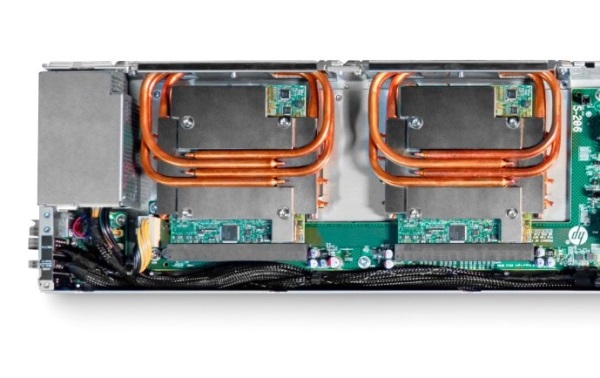Yes, you were always told to keep your drinks away from the computer so you don’t risk electrical damage, but Hewlett Packard is intentionally using water to cool off the servers of its newly released supercomputer with little risk of damaging electrical components. HP's Apollo 8000. (Image via Hewlett Packard)
HP's Apollo 8000. (Image via Hewlett Packard)
The Apollo 8000 supercomputer released this week uses this water-cooling technique to improve energy efficiency.
The active parts of the computer are cooled by circulating water through the server racks but not into server enclosures.
According to IEEE, “Fluids are far more dense than air, which makes them a more efficient medium to transport heat from computing gear.”
Why does anyone care about a water-cooled supercomputer?
Conserving energy in supercomputers is incredibly important because these computers consume millions of dollars in energy yearly.
HP’s Apollo 8000 isn’t the first of its kind. Other companies have been developing water-cooling systems too. IBM has a supercomputer that runs water through copper pipes, and even Google uses water-cooling techniques in some of its data centers by circulating water outside of its server racks rather than directly into server trays.
How does it work?
The HP Apollo 8000 System is the world’s first 100% liquid-cooled supercomputer with built-in technology that protects the hardware. It’s built on a scalable rack design with up to 144 servers per rack, offers four times the teraflops per rack compared to air-cooled designs, and its energy-efficient design helps organizations eliminate up to 3,800 tons of carbon dioxide waste from their data centers per year. Apollo 8000 supercomputer. (Image via Hewlett Packard)
Apollo 8000 supercomputer. (Image via Hewlett Packard)
HP developed a heat-removal system that separates the heat from the servers. Each server has a package that holds a series of heat pipes or small copper pipes filled with gas and liquid. The heat is then removed from the servers and transferred into the heat sinks.
The heat pipes take the heat from the top of the processor and move it to the side where the thermal bus bar is. While this is happening, a phase change (from liquid to gas) is taking place inside the pipes.
HP’s first water-cooled supercomputer has now been installed at the National Renewable Energy Lab in Colorado.
Story via IEEE.
Advertisement





